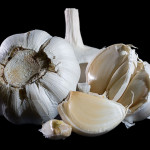by Catherine Haug, March 19, 2017 (photo, right by Cat and Shelli, for our tutorial on rendering lard)
This hint comes from Janet and Edd Blacker of our core team:
“We have found that using parchment paper on cookie sheets and other pans in the oven when baking things works great. No sticking and it makes the pans easier to clean.“
It’s important to use actual parchment paper, not waxed paper for several reasons; read on for those and for other kitchen uses of parchment paper. (more…)




